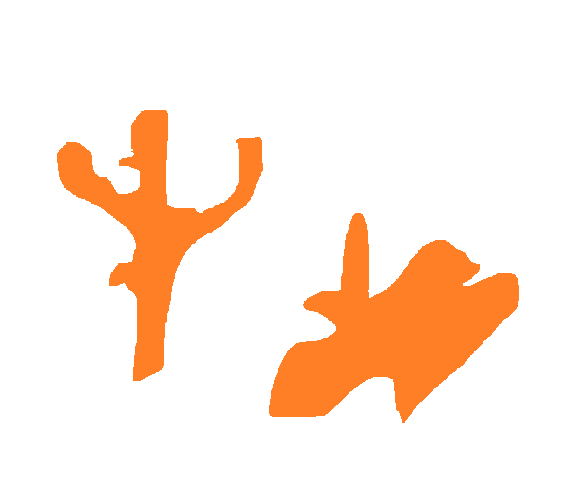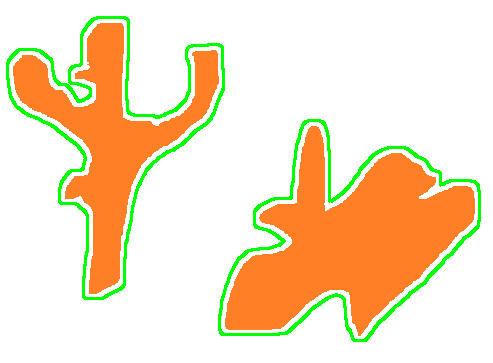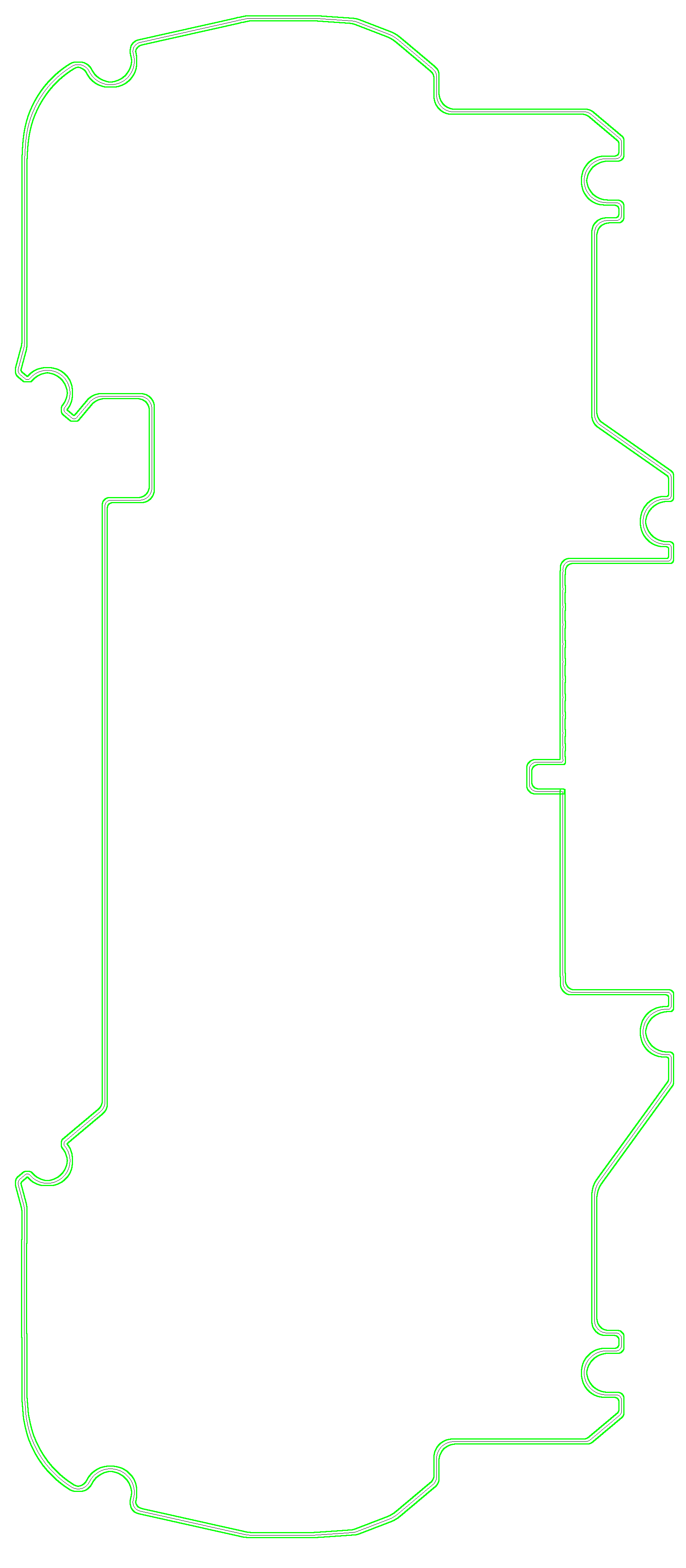This forum is disabled, please visit https://forum.opencv.org
 | 1 | initial version |
i am not sure if i understand rigth but maybe cv::erode is solve your problem


#include "opencv2/imgcodecs.hpp"
#include "opencv2/highgui/highgui.hpp"
#include "opencv2/imgproc/imgproc.hpp"
#include <iostream>
#include <stdio.h>
#include <stdlib.h>
using namespace cv;
using namespace std;
Mat src; Mat src_gray;
int thresh = 100;
int max_thresh = 255;
int main( int, char** argv )
{
src = imread("25912.png");
if (src.empty())
{
cerr << "No image supplied ..." << endl;
return -1;
}
cvtColor( src, src_gray, COLOR_BGR2GRAY );
blur( src_gray, src_gray, Size(3,3) );
const char* source_window = "Source";
namedWindow( source_window, WINDOW_AUTOSIZE );
Mat canny_output;
vector<vector<Point> > contours;
vector<Vec4i> hierarchy;
// you can change parameters to your result
erode(src_gray,src_gray, Mat(), Point(-1,-1),5);
Canny( src_gray, canny_output, thresh, thresh*2, 3 );
findContours( canny_output, contours, hierarchy, RETR_TREE, CHAIN_APPROX_SIMPLE, Point(0, 0) );
for( size_t i = 0; i< contours.size(); i++ )
{
Scalar color = Scalar( 0,255,0 );
drawContours( src, contours, (int)i, color, 2, 8, hierarchy, 0, Point() );
}
imshow( source_window, src );
waitKey(0);
return(0);
}
 | 2 | No.2 Revision |
i am not sure if i understand rigth but maybe cv::erode is helps to solve your problem


#include "opencv2/imgcodecs.hpp"
#include "opencv2/highgui/highgui.hpp"
#include "opencv2/imgproc/imgproc.hpp"
#include <iostream>
#include <stdio.h>
#include <stdlib.h>
using namespace cv;
using namespace std;
Mat src; Mat src_gray;
int thresh = 100;
int max_thresh = 255;
int main( int, char** argv )
{
src = imread("25912.png");
if (src.empty())
{
cerr << "No image supplied ..." << endl;
return -1;
}
cvtColor( src, src_gray, COLOR_BGR2GRAY );
blur( src_gray, src_gray, Size(3,3) );
const char* source_window = "Source";
namedWindow( source_window, WINDOW_AUTOSIZE );
Mat canny_output;
vector<vector<Point> > contours;
vector<Vec4i> hierarchy;
// you can change parameters to your result
erode(src_gray,src_gray, Mat(), Point(-1,-1),5);
Canny( src_gray, canny_output, thresh, thresh*2, 3 );
findContours( canny_output, contours, hierarchy, RETR_TREE, CHAIN_APPROX_SIMPLE, Point(0, 0) );
for( size_t i = 0; i< contours.size(); i++ )
{
Scalar color = Scalar( 0,255,0 );
drawContours( src, contours, (int)i, color, 2, 8, hierarchy, 0, Point() );
}
imshow( source_window, src );
waitKey(0);
return(0);
}
 | 3 | No.3 Revision |
i am not sure if i understand rigth but maybe cv::erode helps to solve your problem


#include "opencv2/imgcodecs.hpp"
#include "opencv2/highgui/highgui.hpp"
#include "opencv2/imgproc/imgproc.hpp"
#include <iostream>
#include <stdio.h>
#include <stdlib.h>
using namespace cv;
using namespace std;
Mat src; Mat src_gray;
int thresh = 100;
int max_thresh = 255;
int main( int, char** argv )
{
src = imread("25912.png");
if (src.empty())
{
cerr << "No image supplied ..." << endl;
return -1;
}
cvtColor( src, src_gray, COLOR_BGR2GRAY );
blur( src_gray, src_gray, Size(3,3) );
const char* source_window = "Source";
namedWindow( source_window, WINDOW_AUTOSIZE );
Mat canny_output;
vector<vector<Point> > contours;
vector<Vec4i> hierarchy;
// you can change parameters to your result
erode(src_gray,src_gray, Mat(), Point(-1,-1),5);
Canny( src_gray, canny_output, thresh, thresh*2, 3 );
findContours( canny_output, contours, hierarchy, RETR_TREE, CHAIN_APPROX_SIMPLE, Point(0, 0) );
for( size_t i = 0; i< contours.size(); i++ )
{
Scalar color = Scalar( 0,255,0 );
drawContours( src, contours, (int)i, color, 2, 8, hierarchy, 0, Point() );
}
imshow( source_window, src );
waitKey(0);
return(0);
}
your image's result:
